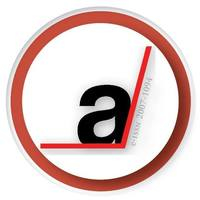Fomento de la innovación y flexibilidad en desarrollo de objetos de aprendizaje. La plataforma AGORA
Resumen
Palabras clave
Texto completo:
HTMLReferencias
ADL, Advanced Distributed Learning. (2004). SCORM 2004 Sharable Content Object Reference Model (3ra ed.). Recuperado de http://www.adlnet.org/wp-content/uploads/2013/09/SCORM_2004_Overview.pdf
Anido Rifón, L; Fernández Iglesias, M. J.; Llamas Nistal, M.; Caeiro Rodríguez, M.; Santos Gago, J.; Rodríguez Estévez, J. S. (2001). A Component Model for Standardized Web-Based Education. Journal on Educational Resources in Computing, vol. 1, núm. 2.
Aragón Carave, Eduardo; Castro Ling, Cynthia C.; Gómez Heredia, Blas Alberto; González Plascencia, Rafael. (2009). Objetos de aprendizaje como recursos didácticos para la enseñanza de matemáticas. Apertura, vol. 1, núm. 11, octubre, pp. 22-35. Recuperado de http://www.udgvirtual.udg.mx/apertura/index.php/apertura/article/view/123
Brogan, Pat. (2002). Using the Web for Interactive Teaching and Learning, Nueva York: Macromedia Inc.
Chen, Gang; Shen, Ruimin; Wang, Jiajun; Chen, Zeyu. (2007). Collaborative Education Model and Its Application in e-learning. The 6th IEEE/ACIS International Conference on Computer and Information Science pp. 856-860.
Collis, Betty y Strijker, Allard. (2004). Technology and Human Issues in Reusing Learning Objects. Journal of Interactive Media in Education, vol. 4, núm. 1.
Walsh, Eddie; Wade, Vincent P.; Lawless, S?amus; O'Connor, Alexander; Dagger, Declan. (2007). Service-Oriented E-Learning Platforms: From Monolithic Systems to Flexible Services. IEEE Internet Computing, vol. 11, pp. 28-35. doi: http://dx.doi.org/10.1109/MIC.2007.70
Downes, Stephen. (2005). "E-learning 2.0". Recuperado de http://www.elearnmag.org/subpage.cfm?section=articles&article=291
Fulantelli, Giovanni; Gentile, Manuel; Taibi, Davide; Allegra, Mario. (2008). The Open Learning Object Model to Promote Open Educational Resources. Journal of Interactive Media in Education, núm, 1. doi: http://dx.doi.org/10.5334/2008-9
McGreal, Rory. (2004). Learning Objects: A Practical Definition. International Journal of Instructional Technology and Distance Learning, vol. 1, núm. 9. Recuperado de http://www.itdl.org/journal/sep_04/article02.htm
Menéndez, Victor; Prieto, Manuel; Zapata, Alfredo. (2010). Sistemas de gestión integral de objetos de aprendizaje. IEEE-RITA, Revista Iberoamericana de Tecnologías del Aprendizaje, vol. 5, núm. 2, pp. 47-48. doi: http://dx.doi.org/10.13140/2.1.2065.0248
Menéndez, Víctor; Zapata G., Alfredo; Vidal C, Christian; Segura N., Alejandra; Prieto M., Manuel. (2010). An Approach to Metadata Generation for Learning Objects. En M. D. Lytras et al. (Eds.), Knowledge Management, Information Systems, e-learning, and Sustainability Research (pp. 190-195). Berlín: Springer Berlin Heidelberg,. doi: http://dx.doi.org/10.1007/978-3-642-16318-0_22
Merrill, M. David. (1996). "Instructional Transaction Theory: An Instructional Design Model based on Knowledge Objects", Educational Technology, vol. 36, núm. 3, pp. 30-37.
Mohan, P. (2004). Reusable Online Learning Resources: Problems, Solutions and Opportunities. Proceedings of the IEEE international Conference on Advanced Learning Technologies, Washington: IEEE Computer Society, pp. 904-905. doi: http://dx.doi.org/10.1109/ICALT.2004.1357713
Ochoa, X. (2010). "Modeling the MacroBehavior of Learning Object Repositories", EdMedia.
Organista, J. y G. Cordero (2006), "Estadística y objetos de aprendizaje. Una experiencia en vivo", Apertura, año 6, núm.5, noviembre, pp. 22-35.
Saddik, Abdulmotaleb; Fischer, Stephan; Steinmetz, Ralf. (2001). Reusability and adaptability of interactive resources in Web based educational systems. Journal on Educational Resources in Webbased educational systems, vol. 1, núm. 1, marzo.
Schreurs, Jeanne & Al-Zoubi A. Y. (2007). Converting Content to Reusable Learning Objects Adaptable to User Preferences and Infrastructure. The World Conference on e-learning in Corporate, Government, Healthcare, and Higher Education 2007, AACE, pp. 6537-6544.
Universidad Autónoma de Yucatán (UADY). (2002), Modelo educativo y académico. Recuperado de http://www.uady.mx/pdfs/me.pdf
Wade, Vincent P. & Ashman, Helen. (2007). Guest Editors' Introduction: Evolving the Infrastructure for Technology Enhanced Distance Learning. IEEE Internet Computing, vol. 11, núm. 3, pp. 16-18. http://dx.doi.org/10.1109/MIC.2007.58
Wiley, David A. (2002). Connecting Learning Objects to Instructional Design Theory: A Definition, a Metaphor, and a Taxonomy. D. A. Wiley (Ed.), The Instructional Use of Learning Objects, Association for Instructional Technology and the Association for Educational Communications and Technology.
Métricas de artículo
Metrics powered by PLOS ALM
Enlaces refback
- No hay ningún enlace refback.
Apertura vol. 16, núm. 1, abril - septiembre 2024, es una revista científica especializada en innovación educativa en ambientes virtuales que se publica de manera semestral por la Universidad de Guadalajara, a través de la Coordinación de Recursos Informativos del Sistema de Universidad Virtual. Oficinas en Av. La Paz 2453, colonia Arcos Sur, CP 44140, Guadalajara, Jalisco, México. Tel.: 3268-8888, ext. 18775, www.udgvirtual.udg.mx/apertura, apertura@udgvirtual.udg.mx. Editor responsable: Alicia Zúñiga Llamas. Número de la Reserva de Derechos al Uso Exclusivo del Título de la versión electrónica: 04-2009-080712102200-203, e-ISSN: 2007-1094; número de la Reserva de Derechos al Uso Exclusivo del Título de la versión impresa: 04-2009-121512273300-102, ISSN: 1665-6180, otorgados por el Instituto Nacional del Derecho de Autor. Número de Licitud de Título: 13449 y número de Licitud de contenido: 11022 de la versión impresa, ambos otorgados por la Comisión Calificadora de Publicaciones y Revistas Ilustradas de la Secretaría de Gobernación. Responsable de la última actualización de este número: Sergio Alberto Mendoza Hernández. Fecha de última actualización: 22 de marzo de 2024.
 Apertura
Apertura



















